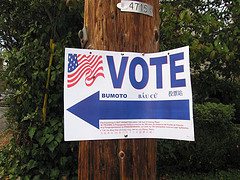Call it a tale of two airports.
In Missouri, a plan to open the nation’s first privately developed and operated commercial airport will come to fruition when the built-from-scratch Branson Airport opens on May 11.
In Illinois, a plan to lease Chicago’s Midway Airport that was seen as a model for privatization has collapsed in the face of the global credit crunch.
Two airports, two unique approaches and two completely different outcomes. Yet each in its own way may offer insights on how the U.S. funds, builds and manage its transportation infrastructure for years to come.
Crumbling infrastructure, creative financing
According to the American Society of Civil Engineers, the nation’s infrastructure is in such dire shape that it would take $2.2 trillion over the next five years to reverse decades of underfunding and neglect. The shortfall for transportation infrastructure alone is pegged at more than $800 billion.
State and local governments are simply unable (or unwilling) to fill the gap. The proposed solution: sell or lease public assets to private companies that would provide money upfront in return for the right to run the operation and keep most of the revenue.
In aviation, the Midway proposal — a 99-year lease in exchange for an upfront payment of $2.5 billion — would have constituted the first privatization of a public airport in the U.S. under an FAA pilot program announced in 1996. “It was going to be the grand demonstration of the viability of privatization,” says Joseph Schwieterman, a professor at DePaul University and proponent of public-private partnerships (P3). “But the consortium overbid, got cold feet and the thing unraveled.”
Which is not to suggest that airport privatization is dead (although there are currently no active projects in the FAA program). Instead, say proponents, future deals will likely revolve around smaller, lower-profile projects that are structured to ensure that public assets aren’t being sold off for one-time cash payments. “You have to give the public some value for their dollars,” says Steve Steckler, chairman of Infrastructure Management Group, a P3 advisory firm, “and not just take it from future users.”
Meanwhile, Branson Airport is getting ready to receive its first commercial flights next week. As a brand-new project built without government funding, it presents a completely different proposition, yet it also presents an intriguing option as the nation confronts its transportation needs. “Branson is unique,” says Schwieterman, “but the model is one that will surely be tried in other places.”
Turnpikes, tollways and the road ahead
In the interim, most travelers’ experience with privatized transportation systems will continue to come via the tolls charged on various highways and turnpikes. According to a recent report by the U.S. Public Interest Research Group (U.S. PIRG), 15 roads in the U.S. had undergone some form of privatization by the end of 2008, with another 79 projects currently under consideration.
Four years ago, Chicago once again proved to be a leader in the field when it leased the eight-mile Chicago Skyway to a private operator for 99 years in exchange for $1.8 billion. A year later, the 157-mile-long Indiana Toll Road was leased to the same group for 75 years for $3.8 billion. (Conversely, a proposal to lease the Pennsylvania Turnpike for 75 years for $12.8 billion fell apart last fall.)
Whether such deals are good for consumers remains controversial. According to proponents, privatization leads to more efficient operations and better maintenance. It also “provides cover” for local governments unwilling or unable to raise tolls on their own. (Historically, toll increases have lagged the cost of living, one reason most tollway deals allow operators to raise fees in step with inflation or GDP.)









